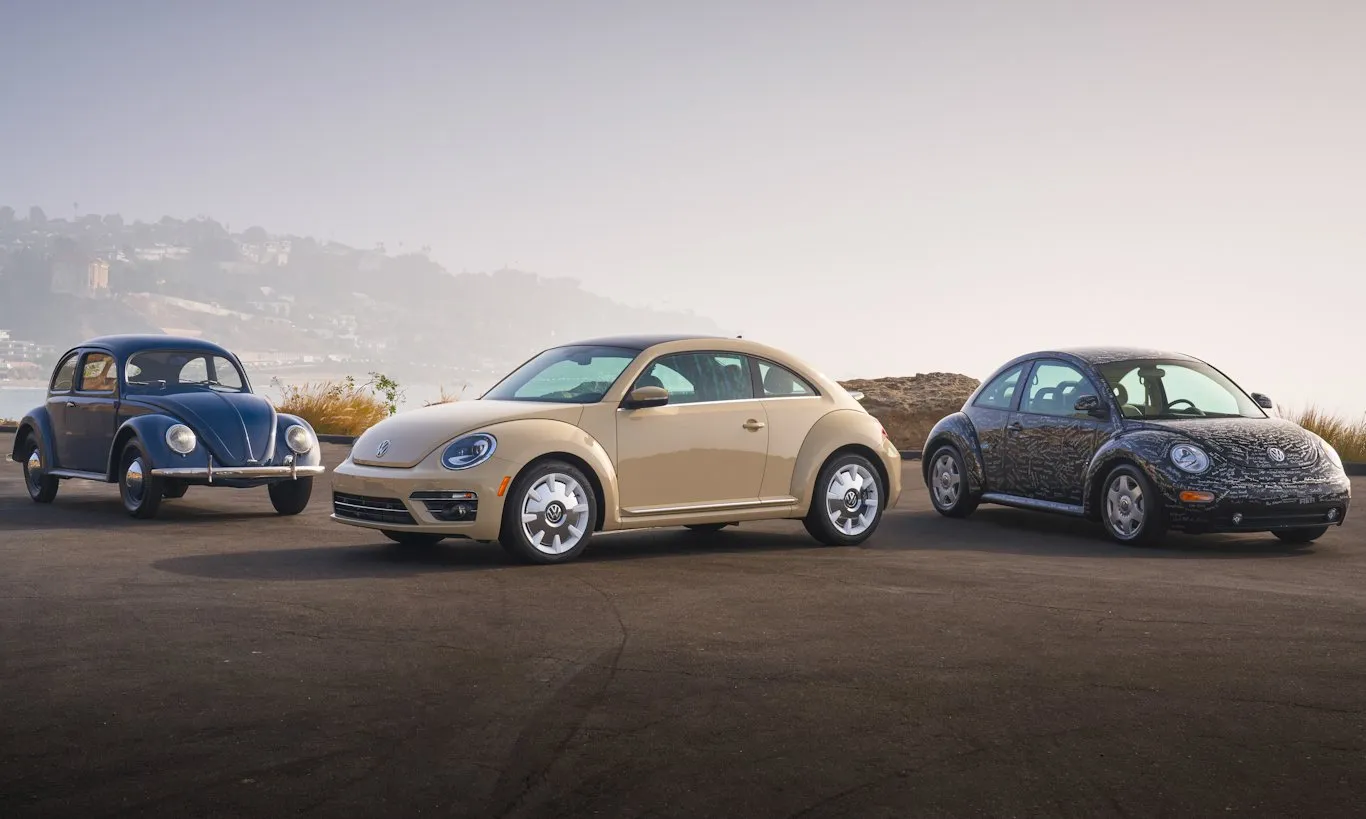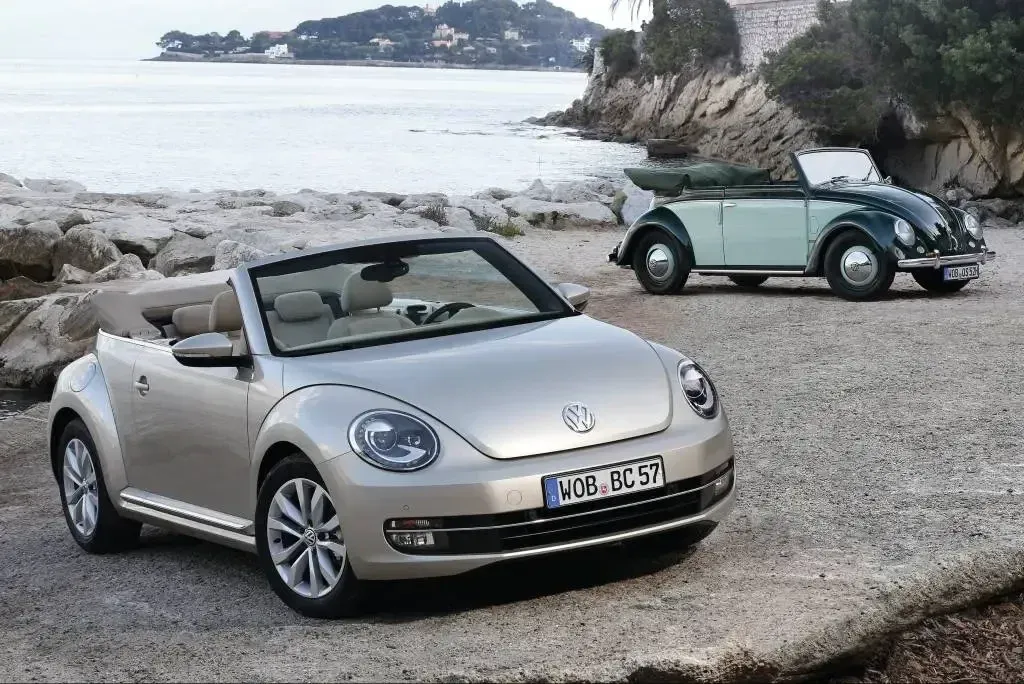The Secret Behind the Shape of the Volkswagen Beetle

Anúncios
The shape of the Volkswagen Beetle is instantly recognizable, a cultural icon that blends nostalgia with engineering ingenuity.
Its rounded silhouette, compact stance, and quirky charm have captivated drivers for decades, but what lies beneath this distinctive design?
Far from being a mere aesthetic choice, the Beetle’s form is a masterclass in blending functionality, cultural resonance, and forward-thinking engineering.
Anúncios
This article uncovers the hidden forces—historical, aerodynamic, and psychological—that shaped this automotive legend, revealing why its curves continue to resonate in 2025.
A Design Born from Necessity
In the 1930s, Germany sought an affordable car for the masses, a vision championed by Ferdinand Porsche under Adolf Hitler’s directive for a “people’s car” (Volkswagen).
The shape of the Volkswagen Beetle emerged from this pragmatic goal: a vehicle that was economical, reliable, and easy to produce.
But why a rounded, almost egg-like form?
The answer lies in early 20th-century engineering constraints.
Rectangular designs were common, but Porsche’s team prioritized aerodynamics to maximize fuel efficiency and performance on modest engines.
The Beetle’s curved body reduced air resistance, allowing its air-cooled, rear-mounted engine to push the car efficiently, even with limited horsepower.
Consider the analogy of a river pebble smoothed by years of flowing water.
Just as nature sculpts stones to minimize resistance, the Beetle’s shape was crafted to slip through the air with minimal drag.
This wasn’t just about speed; it was about squeezing every mile out of a gallon of fuel—a critical factor for a car meant for everyday people during an era of economic hardship.
The result was a vehicle that could hit 62 mph on just 25 horsepower in its early models, a feat that owed much to its streamlined profile.
Aerodynamics Meets Iconic Style
The shape of the Volkswagen Beetle wasn’t solely about function; it was a bold stylistic statement.
Unlike the boxy cars of its time, the Beetle’s soft curves and circular headlights gave it a friendly, approachable character.
This wasn’t accidental.
Porsche’s lead designer, Erwin Komenda, drew inspiration from nature and early aviation, where rounded forms dominated for their aerodynamic benefits.
The Beetle’s teardrop profile minimized turbulence, a principle still evident in modern vehicles like the Tesla Model 3, which echoes similar aerodynamic priorities.
A 2019 study by the Automotive Research Center in Stuttgart revealed that the Beetle’s drag coefficient (Cd) of 0.48 in its original design was remarkably low for its era, rivaling many modern compact cars.
This efficiency wasn’t just a technical win; it shaped the Beetle’s personality.
Its rounded roof and compact footprint made it feel less like a machine and more like a companion, a trait that endeared it to millions.
Why do we still smile when we see a Beetle on the road?
Perhaps it’s because its shape taps into a universal human affinity for soft, organic forms—a psychological nod to comfort and familiarity.
| Model Year | Drag Coefficient (Cd) | Horsepower | Top Speed (mph) |
|---|---|---|---|
| 1949 Beetle | 0.48 | 25 | 62 |
| 1968 Beetle | 0.46 | 40 | 81 |
+ Why Soviet Cars Had Built-In Ice Scrapers and Ashtrays
Cultural Resonance and Marketing Genius
The shape of the Volkswagen Beetle became a canvas for cultural expression.
In the 1960s, it transformed from a utilitarian vehicle into a symbol of counterculture, embraced by hippies and artists who adorned its curves with vibrant paint and psychedelic decals.
The Beetle’s compact, rounded form made it a perfect billboard for individuality—its simplicity invited personalization in a way angular sedans never could.
Volkswagen leaned into this, with marketing campaigns like the 1960s “Think Small” ads, which turned the Beetle’s modest size and shape into a rebellious rejection of oversized American cars.
Take, for example, a fictional 1967 Beetle owned by a San Francisco artist named Clara.
She painted her car with swirling flowers and peace signs, transforming its rounded hood into a rolling manifesto of freedom.
This wasn’t just a car; it was a statement, enabled by a shape that felt accessible and inviting.
Similarly, in 2025, a New York-based entrepreneur named Javier retrofitted his 1998 New Beetle with LED lighting and a custom matte finish, proving the shape’s enduring appeal as a platform for self-expression.
These examples highlight how the Beetle’s design transcended engineering, becoming a cultural artifact that invited creativity.
For more on the cultural impact of the Volkswagen Beetle, you can visit the Smithsonian Magazine.

Engineering Trade-offs and Evolution
While the shape of the Volkswagen Beetle was a triumph of form and function, it wasn’t without trade-offs.
The rounded cabin prioritized aerodynamics over interior space, making it cramped compared to modern compacts.
Early models lacked the legroom and cargo capacity of competitors like the Ford Falcon, a point critics often raised.
Yet, Volkswagen doubled down on the Beetle’s compact footprint, refining the design over decades to balance practicality with its iconic silhouette.
By the 1998 relaunch of the New Beetle, the shape had evolved subtly.
The modernized version retained the classic curves but incorporated a slightly longer wheelbase and a more spacious interior.
This evolution is evident in the table below, comparing key dimensions across Beetle generations:
| Model | Length (in) | Width (in) | Passenger Volume (cu ft) |
|---|---|---|---|
| 1960 Beetle | 160.6 | 60.6 | 42 |
| 1998 New Beetle | 161.1 | 67.9 | 81 |
| 2012 Beetle | 168.4 | 71.2 | 85 |
++ The History of Audi: Technology and Innovation on Four Wheels
This table underscores how Volkswagen preserved the shape of the Volkswagen Beetle while adapting to modern demands.
The 2012 model, for instance, offered a sportier stance with sharper lines, yet retained the core elements—rounded headlights, curved fenders—that defined the original.
This balance of heritage and innovation kept the Beetle relevant until its production ended in 2019.

The Psychology of Curves
Why does the shape of the Volkswagen Beetle feel so timeless?
Psychologically, humans are drawn to rounded shapes, which evoke safety and approachability.
Studies in design psychology, such as a 2020 paper from the Journal of Consumer Research, show that curved forms are perceived as friendlier than angular ones, influencing everything from product design to architecture.
The Beetle’s circular headlights and smooth contours tap into this, creating an emotional connection that boxy SUVs struggle to replicate.
This isn’t just aesthetics; it’s science shaping consumer behavior.
In 2025, as electric vehicles dominate headlines, the Beetle’s legacy offers lessons.
Its shape prioritized efficiency long before sustainability became a buzzword.
Imagine a modern electric Beetle, its curves optimized for battery range, blending nostalgia with cutting-edge tech.
Volkswagen has hinted at such possibilities with concepts like the ID. Buzz, a nod to the Beetle’s spiritual successor.
The enduring appeal of the Beetle’s shape lies in its ability to feel both retro and futuristic—a rare feat in automotive design.
A Legacy That Shapes the Future
The shape of the Volkswagen Beetle is more than a design; it’s a testament to the power of blending form, function, and emotion.
From its aerodynamic roots to its role as a cultural icon, the Beetle’s curves tell a story of innovation and adaptability.
Its influence persists in 2025, as designers draw on its legacy to craft vehicles that balance efficiency with emotional resonance.
The Beetle reminds us that a car’s shape isn’t just about metal and glass—it’s about the stories it tells and the feelings it evokes.
In a world of angular crossovers and sleek EVs, the Beetle’s rounded silhouette stands out as a reminder: great design doesn’t just move you; it moves the culture.
What will the next generation of iconic shapes inspire?
Only time will tell, but the Beetle’s legacy proves that a single curve can change the world.
